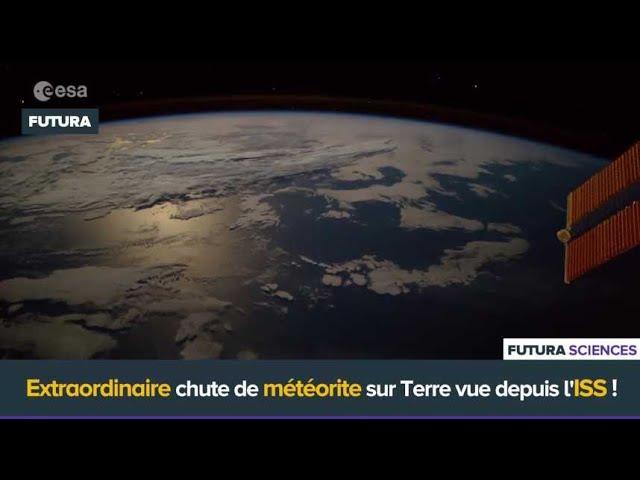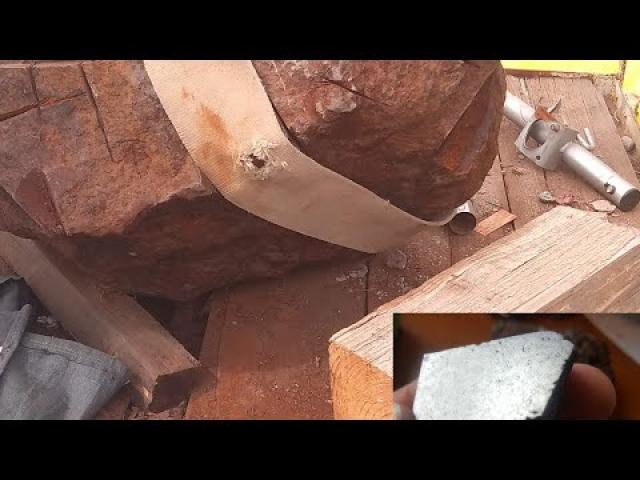A Meteorite hit a House in Uruguay & there was bad Meteorite laundering.
Description
...but what I want to know about is the gelatinous cube.
God bless everyone,
T
https://www.paypal.me/thornews
mail
5430 Birdwood rd. #416
Houston, Texas 77096
story by Phil Plait the Bad Astronomer
https://www.syfy.com/syfywire/meteorite-impacts-a-house-in-uruguay
bout a hundred tons of meteoric material hits the Earth every day.
Now before you panic, essentially all of it burns up in our atmosphere high above the planet’s surface! The vast majority of all that is made up of very tiny bits of rock, metal, or ice sloughed off of comets or asteroids, usually the size of a grain of sand or smaller. This stuff burns up from 80 – 100 kilometers up, and makes lovely shooting stars for us to ooooh and aaaaah at.
But sometimes the object is a bit bigger. How it behaves depends on the composition, impact speed (generally several dozen kilometers per second), entry angle, and even the structure of the incoming meteoroid (some are riddled with cracks and fall apart easily while others are solid and can penetrate deeper)… but if it’s big enough at least some of it will survive to hit the ground.
In general, unless the original incoming object is more than a few meters across, it will explode due to the literally crushing pressure of its atmospheric dive, crumbling into much smaller pieces. These slow very rapidly, usually in seconds, then free-fall their way to the ground. They reach terminal velocity (a constant speed that balances the pull of gravity and the resistance of the air underneath them) quickly as well, and that depends on their size. [Note: This is such a common question that I wrote an article about it, “Why do asteroids explode high in the atmosphere?”]
The Earth is pretty big, so that daily RDA of a hundred tons of cosmic debris is spread out pretty thinly. The odds of a person or a structure getting hit are pretty long… but the chance isn’t exactly zero.
On September 18, 2015, at around 17:45 UTC, a tiny asteroid entered Earth’s atmosphere above San Carlos, Uruguay. It’s unknown how big it was, but most likely far less than a meter. It broke up as it descended, eventually creating lots of smaller pieces that fell to Earth. One of them, a chunk of rock about 9 centimeters in length, defied the odds. It slammed into a house in San Carlos, piercing the roof; a piece broke off and hit their TV (damaging the screen, because duh), while the main piece hit their bed before finally coming to rest on the floor (which it also damaged).
Wow. Happily, no one was home at the time! Even so, the odds of someone getting hit are of course even smaller; people have a far smaller cross-section than a house*. Good thing, as it was moving at about 90 meters/second (over 300 kilometers per hour). Oof. So this is a very rare meteorite indeed!
A team of meteoriticists analyzed the meteorite and published their results in a recent journal. There were a few eyewitnesses to the bolide (the bright meteor as it passed through our atmosphere) who reported it was as bright as the full Moon — and while these sorts of accounts are notoriously inaccurate, that does fit with it being something relative small (for comparison, the 19-meter Chelyabinsk asteroid impact in 2013 was as bright as the Sun).
The big chunk that hit the house is about 9 x 10 x 6 cm, and has a mass of a little over 700 grams. It’s covered in a dark fusion crust — a thin layer of burned material coating the surface, common in meteorites — and also has many regmaglypts: little scoops out of it that look like someone stuck their thumb in clay. Those form as the meteoroid tumbles as it falls; the heat and pressure carve dimples in it.
Contributed by
philplait_shatner.jpg
Phil Plait
Phil Plait
@BadAstronomer
Mar 22, 2019
Share This Post
214
Shared
11
Comments
Tag: Science
Tag: Features
Tag: Bad Astronomy
Tag: Meteorite
Tag: Asteroid Impact
Tag: Meteors
About a hundred tons of meteoric material hits the Earth every day.
Now before you panic, essentially all of it burns up in our atmosphere high above the planet’s surface! The vast majority of all that is made up of very tiny bits of rock, metal, or ice sloughed off of comets or asteroids, usually the size of a grain of sand or smaller. This stuff burns up from 80 – 100 kilometers up, and makes lovely shooting stars for us to ooooh and aaaaah at.
But sometimes the object is a bit bigger. How it behaves depends on the composition, impact speed (generally several dozen kilometers per second), entry angle, and even the structure of the incoming meteoroid (some are riddled with cracks and fall apart easily while others are solid and can penetrate deeper)… but if it’s big enough at least some of it will survive to hit the ground.
In general, unless the original incoming object is more than a few














